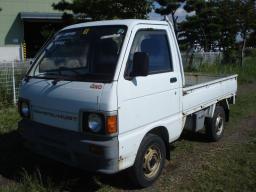Being Different
October 9th, 2010[ Software Development ]
I noticed an undertone to the first day of talks at this week’s Business of Software. That was to be different, stand out, be unique. Create a different company. Towards the end of the day, when a speaker once again suggested that we all should build a ‘different company’, I considered raising my hand to ask… “But if everyone in this room follows your advice to be different, won’t all our companies end up being the same?”
I didn’t ask that question. In the end, that was good because it was answered by the final speaker of day 2 in the clearest way I’ve heard it before. Youngme Moon opened her brilliant talk with the following video:
My lame attempt to summarize: Strong brands stand out and somehow manage to get their customers to view their negatives as positives. Weak brands, through competing, drift towards sameness resulting in their customers viewing their positives as negatives.
One of her examples? While every furniture showroom competes by offering free delivery, great customer service, and quality product, only one brand stands out. There is only one strong brand in this space and it’s Ikea. The others have their positives flipped on them. Their amazing customer service results in “man I wish they’d just leave me alone when I’m in the store” while Ikea’s negatives are flipped as well, “Ah, assembling it is kinda fun”, “I can’t find anyone here who actually works at Ikea but this place is cool”.
Youngme also talked about how vulnerable different ideas are in their infancy. The reason being that a truly different idea is almost indistinguishable from a crazy idea. I’d love to see the looks you’d get if you’d suggested these ideas to Leon’s before Ikea came to Canada:
- Let’s not offer shipping.
- Let’s not compete by increasing the quality of our furniture.
- Let’s offer free daycare to our customers.
- Let’s not have great customer service, people can just roam around on their own.
- Let’s put in a full restaurant with cheap breakfast and meatballs.
In that setting those ideas would be considered lunacy right? If you’ve committed to building a different company then crazy ideas are one of your most precious assets and allowing them to be squashed puts you straight on the path to sameness. You will quickly become indistinguishable from your competitors. If that’s your goal then eliminating crazy is a good start.
Dharmesh from Hubspot talked about how your business has to make happy customers not make customers happy. What’s the difference? The latter is about tooling your entire business to churn out happy customers. The former would have killed Ikea. Had Ikea focused on making their customers happy they would have quickly offered free shipping, made their crappy furniture better quality and easier to assemble etc. In short they would have become the same as everyone else.
Does this mean you need to focus solely on your negatives, build crappy software and make your customers hate you? Well no. If, however, you have decided that being different is important then you need to decide what negatives you’re going to hold on to. Don’t apologize for them, in fact start trumpeting them. Being different for the sake of being different is being a clown. Being different to create a bit of friction and offer your customers a better overall experience is the path to a strong brand. If different is you then you also need to hold crazy in high esteem and foster it and you need to worry less about making everyone happy.
 A personal example? I own a Daihatsu Hijet Jumbo. For me it’s the perfect truck. Someone recently told me “you have the coolest truck in Guelph”. People smile when I drive by, kids shout and cheer at the truck, people take photos of it, etc. Sure they’re laughing at me but if you’re building a brand, isn’t being noticed important?
A personal example? I own a Daihatsu Hijet Jumbo. For me it’s the perfect truck. Someone recently told me “you have the coolest truck in Guelph”. People smile when I drive by, kids shout and cheer at the truck, people take photos of it, etc. Sure they’re laughing at me but if you’re building a brand, isn’t being noticed important?
Why is this crappy little truck cool anyway? Look at all the negatives. You have to drive on the other side of the car, it’s so small you can’t fit anything in it, nothing’s automatic, it barely does 100 km/h, you have to shift gears with your left hand, there’s hardly any room in the cab etc etc. Somehow though, all those negatives are considered positives and people think it’s a cool truck? If Daihatsu aggressively tried to make their customers happy, what would they do? I’m sure you can imagine what the average company would do and within a few years their trucks would look like every other truck on the road. They would become same.
I say keep up the crazy, own your negatives, do something different!
